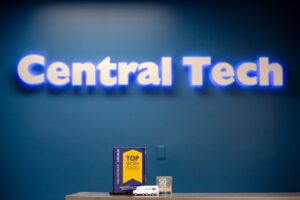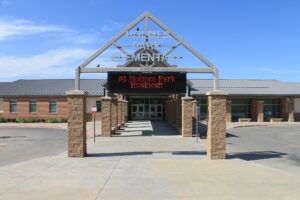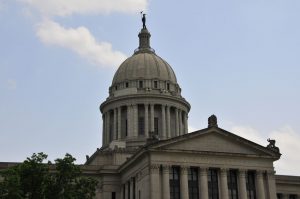Over the course of the last five months, Sapulpa Public Schools has taken several reductions in state education aid, amassing a $540,000 dent.
State aid represents the funds that are appropriated by the State Legislature for school districts, and distributed by the State Department of Education through the “State Aid Formula.” It is based primarily on student counts, with allowances made for various student characteristics represented as grade and categorical weights.
The State Aid calculated using these student counts is then reduced for local revenue collections by subtracting “chargeables.”
“Chargeables” are a district’s local revenue sources that are included in its annual State Aid calculation. The revenue sources are: Ad valorem property taxes, motor vehicle collections, gross production taxes, school land earnings, county 4-mill taxes and rural electric association taxes. The amount of these funds collected by a district (current year for ad valorem & previous year for others) are “charged” or subtracted from the district’s State Aid since these funds are collected locally. As these revenue sources, such as ad valorem taxes, rise, the district’s “chargeables” also increase, meaning less State Aid for the district.
District level budget trims were made in both certified and support positions earlier this year. One glaring reduction was identified when the ad valorem valuation change of Inverness Village received a decrease valuation from $160 million to $50 million. This valuation decrease means SPS will need more state aid disbursed to make up for the ad valorem valuation change of Inverness Village.
“This ad valorem decrease is a perfect example of why we really need to rework the formula so when schools like Sapulpa have decreases it doesn’t leave such a hole in the budget,” said District 12 Senator James Leewright, (R).
Superintendent Rob Armstrong and Finance Director Kenda Terrones presented information to the school board in February of 2017 about the current budget and began planning for the next year. “We’ve had good planning with the board and we saved $1M ahead of where we were last year. If we hadn’t saved that money we’d be in a very difficult situation,” said Armstrong.
“The most important thing in building a strong work force is education, so we have to solve this problem. It’s great to work with a Superintendent like Rob Armstrong who is focused on solving a problem. I commend him for cost saving measures they have done,” said Leewright. Leewright also serves as a Vice-Chair of the Business and Commerce Committee.
According to meeting notes from the Board of Education the district is filing an appeal with the State Aid office to request a change to chargeables. District chargeables are identified by The Projected Revenue from the appeal was said to be $430,000, that figure has since fallen to $230,000. Changes in chargeables are usually addressed when districts experience a significant change in funding.
“Mark is fighting for us. I think he sincerely wants to represent us and wants to make sure everything is being taken care of. He’s doing a wonderful job. Senator Leewright as well, I feel good about our representation but the state legislature needs to wake up,” said Armstrong about the ongoing education budget crisis.
The timeline of events as to the nature of the various cuts:
February
The Oklahoma State Board of Equalization declared a .7 percent general revenue failure which resulted in an $11 million dollar cut to common education. Education Reform Act otherwise known as the 1017 fund was projected to be $39.1 short.
“At this time the Oklahoma State Department of Education adjusted the school district allocations for the remainder of the year. Even after adjusting these allocations the Oklahoma State Department of Education has not had enough cash deposited into our account each month to cover the obligations for school districts,” said Matt Holder Deputy Superintendent of Finance and Federal Programs of the Oklahoma State Department of Education.
“Education funding is a priority of the Oklahoma House. Amid the economic downturn the state has seen over the last several years, the legislature has done their part by increasing the appropriations to education to keep it their budget whole. I’ve promised my constituents that I won’t support a budget that cuts appropriations to education. The apportionments to education, however, have been below their projections which leads to the cuts our schools have seen,” said District 30 Representative Mark Lawson (R).
The State Aid funding formula was appropriated $1.87 billion for FY17. The money came from six different revenue sources:
- $1,038,594,450 from the General Revenue (GR) Fund, $47,885,560 more than in FY 16
- $696,954,056 from the Education Reform Revolving Fund (1017), $32,881,504 less than in FY 16
- $41,168,478 from the Common Education Technology Fund, $6,203,821 less than in FY 16 (Fund collected approx. $31m in FY 16)
- $4,723,795 from the Mineral Leasing Fund, $678,715 less than in FY 16
- $23,397,757 from the Oklahoma Lottery Trust Fund, $6,018,160 less than in FY 16
- $65,865,088 from SB 1584 (Rainy Day Fund), $9,134,912 less than in FY
“1017, Common Ed Tech Fund, Mineral Leasing Fund, and the Oklahoma Lottery Trust Funds are all dedicated revenue sources to common education. Our cash shortfall issues revolve particularly around those dedicated revenue sources,” said Holder.
March
Payments to school districts had a cash shortfall of $18.9 million, $17.4 in April and again in with May $6.8 million for a total of $43.1 million cash shortfall.
Districts should have received 91% of their payments for the year, yet because of the cash shortage they have only received 88.62%. “We are hopeful that OMES will cash forward the June revenue from the 1017 fund to offset the majority of the $43.1 million,” said Holder.
Lawson looks forward to Holder’s finding regarding the ad valorem issue with Inverness and it’s affects on the district. “It is worth noting that SB842 passed committee yesterday. It will appropriate just over $60M from the Constitutional Reserve Fund to the State Board of Education for transfer to the Ad Valorem Reimbursement Fund. I will be voting in favor of this bill when it reaches the House floor next week,” said Lawson.
“Working with Mr. Armstrong is a pleasure. We share a deep desire to continue to make Sapulpa Public Schools better each day. Our ability to communicate and work together is greatly valued, and I appreciate the work he is doing back at home,” said Lawson.











